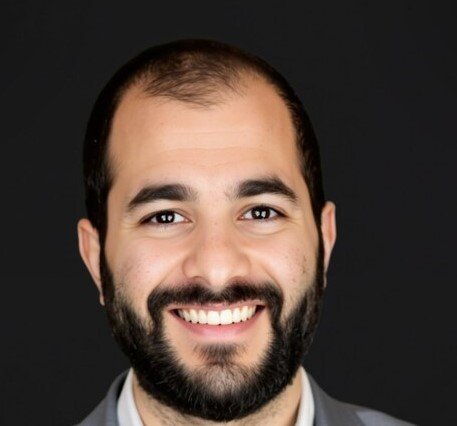Just 1% of 19 Million Accredited U.S. Investors Access Top Venture Capital Returns—Esinli Wants to Fix That
For decades, venture capital’s best-kept secret wasn’t its returns—it was who could get through the front door. Now, one Tel Aviv-based firm is kicking that door wide open.
Esinli Capital, led by outspoken founder and CEO Neevai Esinli, is launching a new platform that lets accredited investors put money into venture capital with as little as $10,000. That’s a seismic shift in a space where minimums typically start at $1 million and sometimes go much, much higher.
The numbers tell a story that’s hard to ignore. Out of 19.4 million American households classified as accredited investors, only about 1% currently participate in venture capital. Not because they don’t want to. But because they can’t afford to.
Millionaires Need Not Apply—You Have to Be Ultra
This isn’t just a finance problem. It’s a story about access.
Accredited investors in the U.S. are defined broadly—individuals earning over $200,000 annually or households with over $1 million in net worth (excluding a primary residence). That makes up around 14.8% of American households, according to recent figures.
And yet, the overwhelming majority of them have never touched venture capital.
Why? Minimum ticket sizes are the culprit. In most elite VC funds, you’re not getting in unless you bring $1–$5 million to the table. That automatically cuts out nearly everyone who isn’t a pension fund, family office, or endowment.
Neevai Esinli calls it what it is: a wealth filter.
“If a successful surgeon making half a million dollars a year can’t get into the same fund as a private university’s endowment, something’s broken,” Esinli said in an interview. “That’s not how opportunity should work.”

The Performance Gap: Public vs. Private
Let’s talk returns. Venture capital hasn’t just outpaced the S&P 500—it’s lapped it.
According to Cambridge Associates, VC funds have posted 19.07% annualized returns over the past 30 years. By comparison, the S&P 500 has delivered 10.70% over that same time period.
The top quartile of VC funds? They routinely shoot for 25–30% IRRs. It’s not even close.
Because the only people who can access those double-digit returns are usually the people who need them the least.
Building a New On-Ramp for Regular Rich People
Esinli Capital’s solution is deceptively simple: lower the barrier.
The new platform, which launched this month, offers access to top-tier venture deals starting at $10,000 per investor. That’s still a significant chunk of change, but it’s miles away from the traditional $1 million gatekeeping.
This doesn’t mean just any startup. Esinli says the platform partners directly with leading VC funds—many of which typically avoid retail investors altogether.
One short sentence: That’s the innovation here.
Through legal structuring, aggregation vehicles, and a bit of technology magic, the firm essentially bundles smaller checks into one LP (limited partner) ticket. That lets investors participate as part of a larger vehicle, and the fund doesn’t have to deal with thousands of individual accounts.
It’s kind of like Costco for private capital.
Here’s what makes it work:
-
The platform aggregates accredited investors into a single fund vehicle
-
Esinli handles fund admin, legal, and reporting to reduce overhead
-
Deals are pre-screened and often involve co-investment with top-tier VCs
Esinli believes that the fintech and fundtech infrastructure is now finally mature enough to handle this. “This should’ve existed a decade ago,” she said. “But now it actually can.”
Critics Say “Not So Fast,” But Momentum Is Real
Of course, not everyone is cheering.
Some traditional venture capital firms are skeptical. They worry that too many smaller investors could add operational headaches or dilute their control over capital calls and decisions. Others cite regulatory complications—though Esinli says their structure is fully compliant under SEC rules for accredited investor vehicles.
There’s also the question of access. Are these investors getting into the same top-tier funds that the big boys enjoy, or is it just crumbs from the table?
Esinli insists it’s the former. “We have GP relationships. We’re not on the outside knocking—we’re bringing people in through the front.”
That may explain why institutional interest is picking up. A few family offices have reportedly inquired about backing the aggregation model for their next-gen clients. The idea? Use Esinli’s model to educate younger heirs while offering real exposure to VC risk and reward.
A Bigger Bet on Equality of Opportunity
At its core, this isn’t just about money. It’s about fairness.
Esinli often comes back to the word “dignity.” She believes investment access reflects how society values people—especially those who’ve worked hard, saved diligently, but still find themselves locked out of elite wealth circles.
She’s not the first to say this, but her approach is bolder than most.
And she’s definitely not alone. Platforms like Sweater, Fundrise, and even certain crypto protocols have flirted with democratizing private investing. But few have made it palatable to mainstream professionals without veering into risk or regulatory grey zones.
Esinli thinks this moment matters. “The economy is shifting. The public markets are saturated. If we don’t build fair on-ramps into the private markets now, we’re going to hard-code inequality for another generation.”
